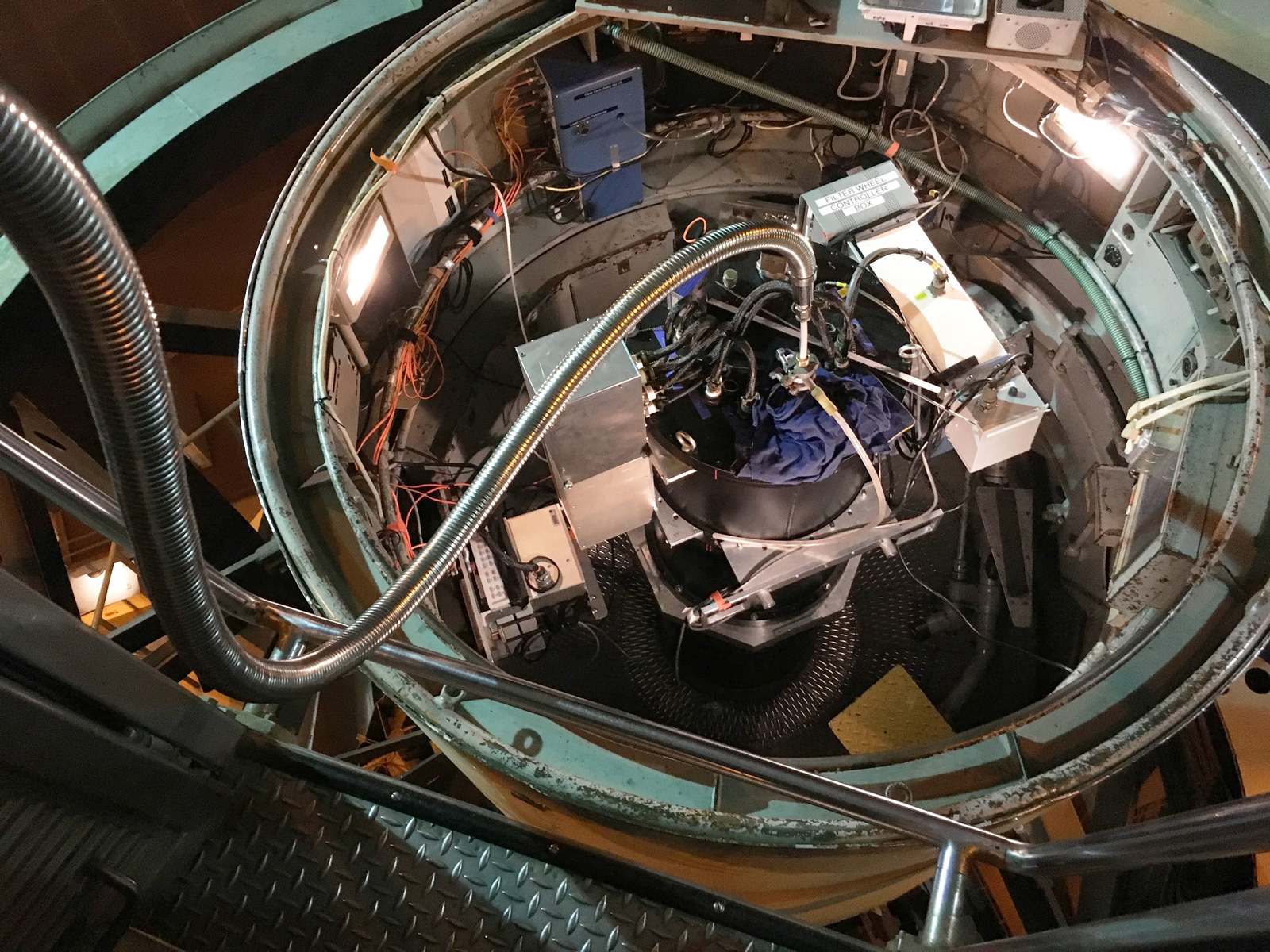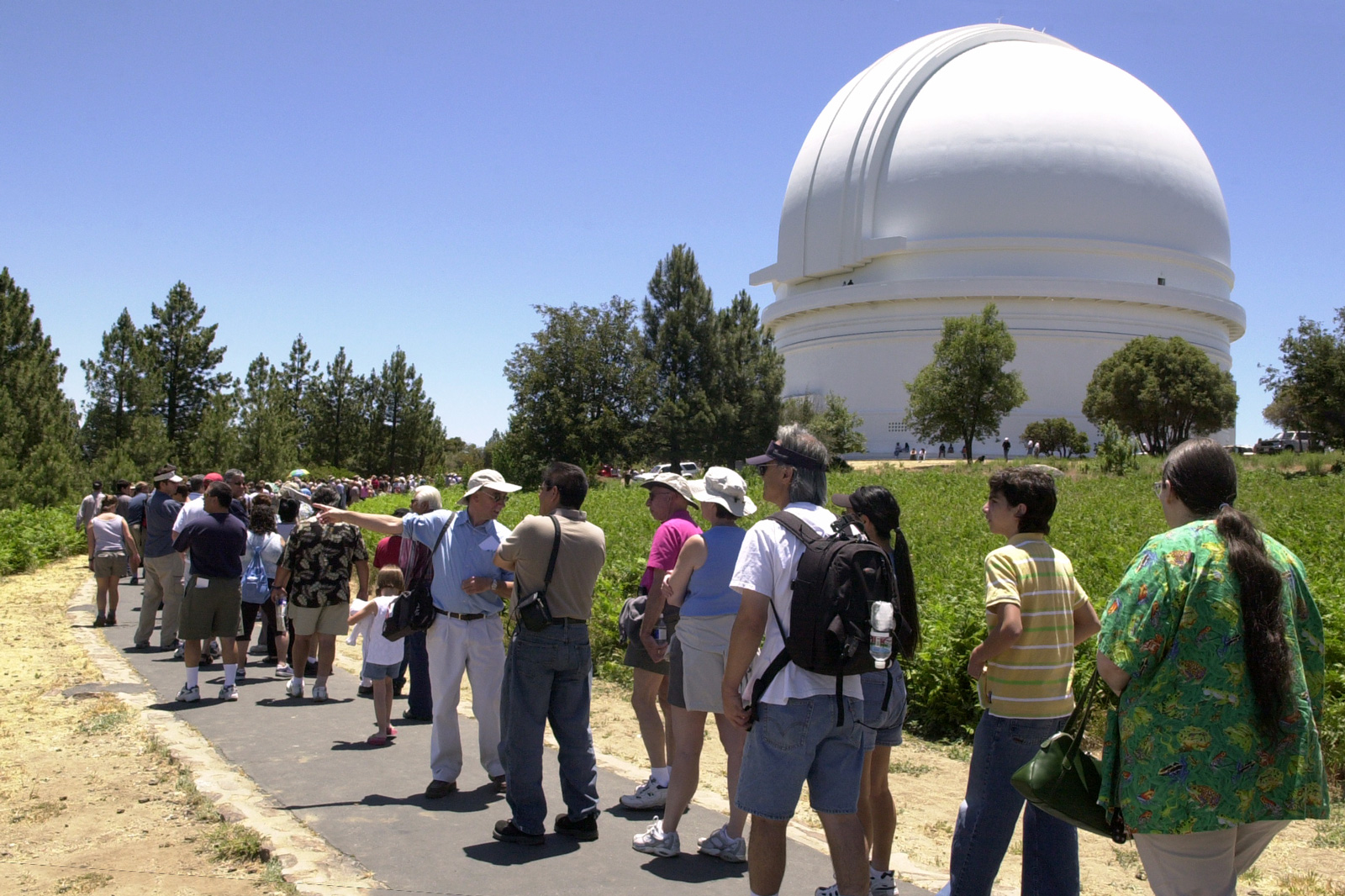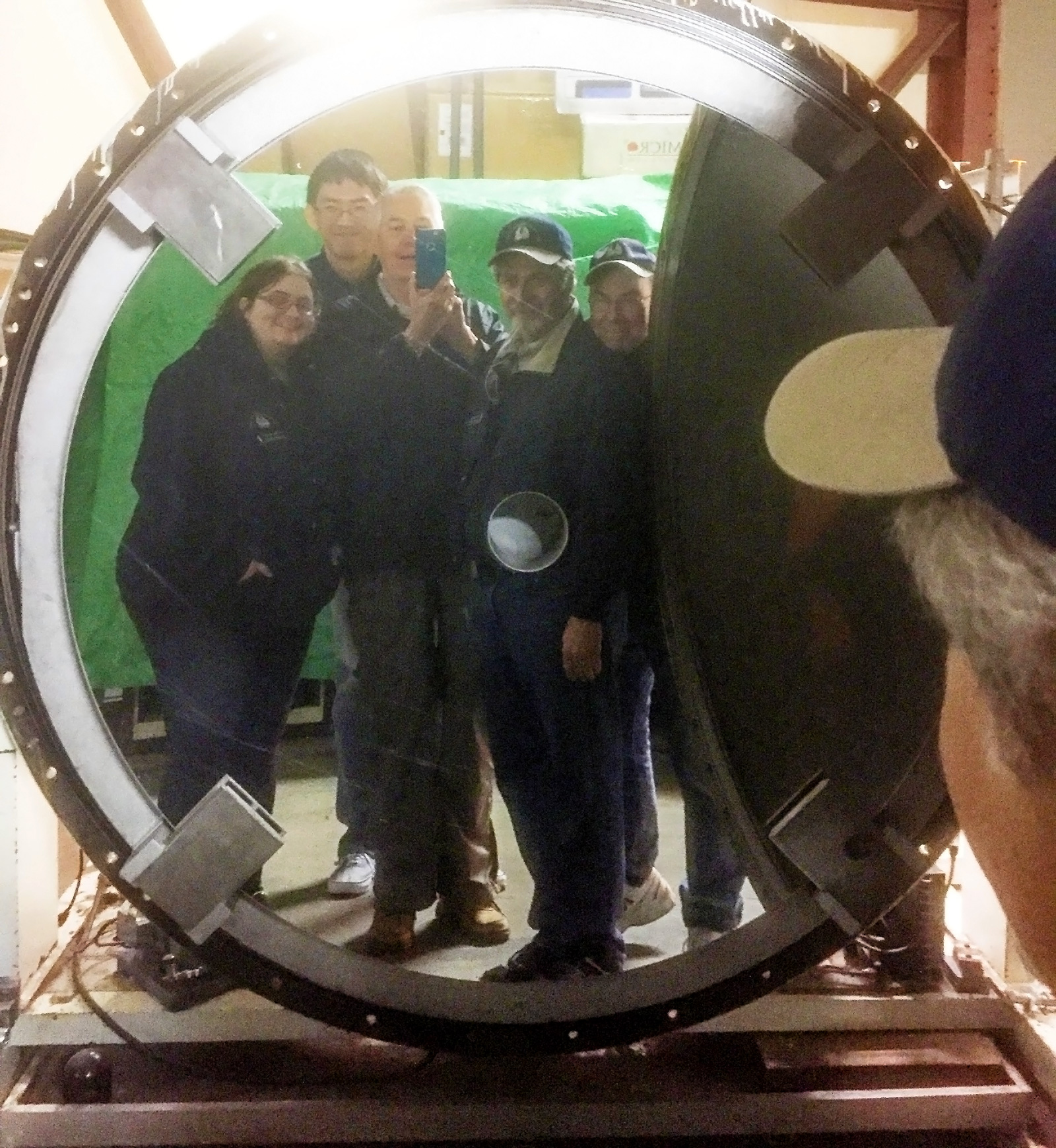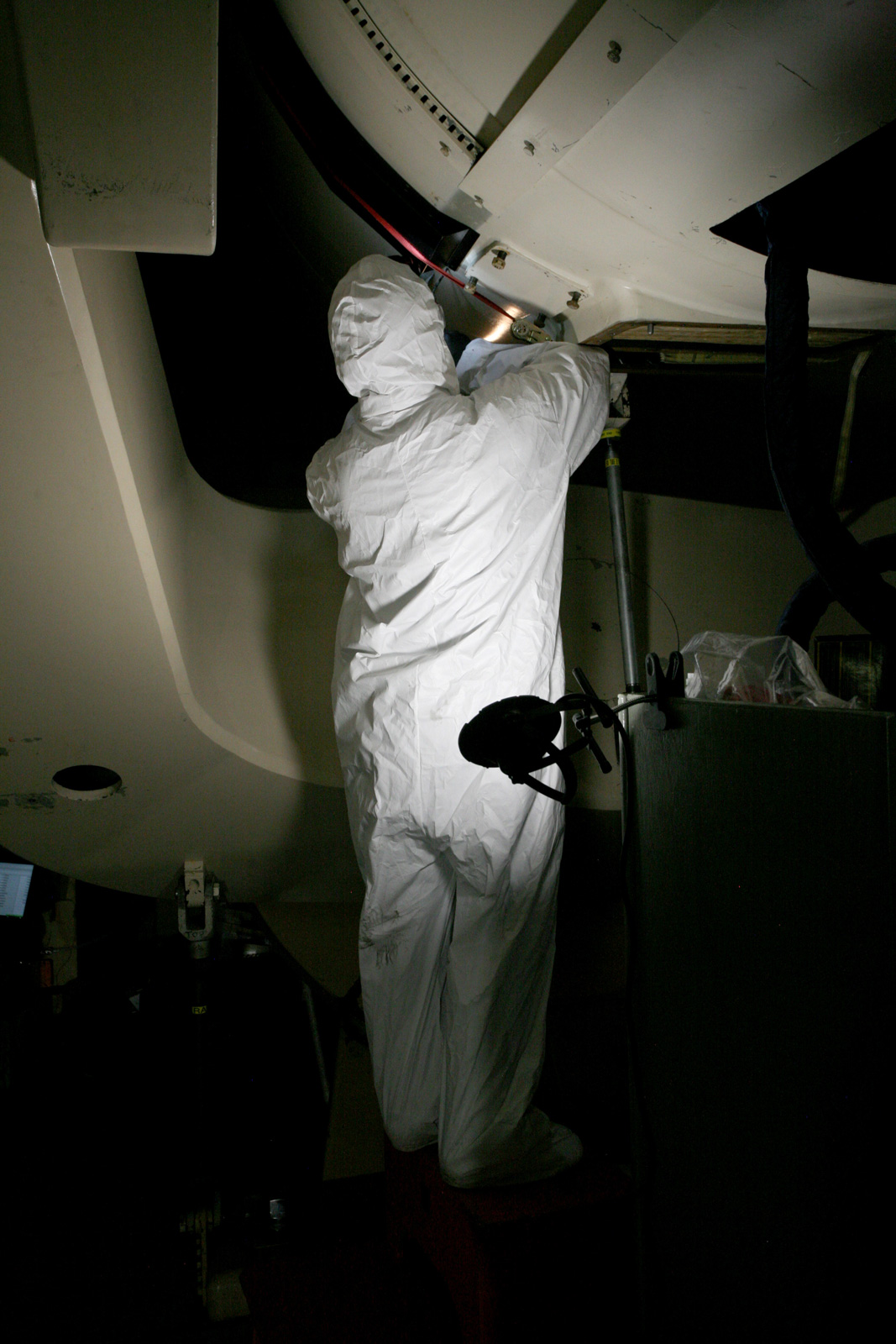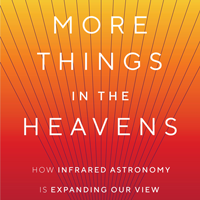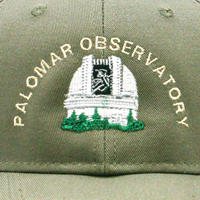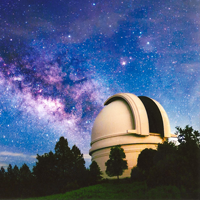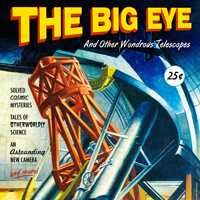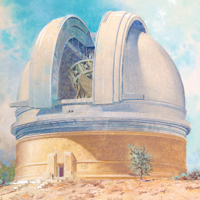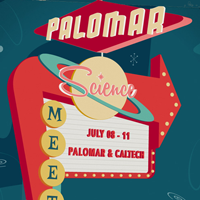Friends of Palomar Observatory Website
Upcoming Events

The Newsletter of the Friends of Palomar Observatory, Vol. 12 No. 3 – September 2017
Weather Reports from Exoplanets
By Steve Flanders

An artist’s concept of TRAPPIST-1f's surface, one of three planets in the habitable zone of the TRAPPIST-1 exoplanetary system. (NASA/JPL/Caltech/T.Pyle/IPAC)
In 1995, astronomers discovered a planet orbiting a main sequence star. 51 Pegasi b was the first such exoplanet known and since then extrasolar planetary science has become a topic of great interest among professionals in the field. With a steadily building list of discoveries, at the end of August, NASA affirms the confirmation of 3,509 exoplanet discoveries in 2,614 extrasolar systems. Of these, 2,491 planets were found by the two Kepler missions. In parallel with advances being made at other observatories, researchers on the Hale Telescope are actively participating in the work of confirming and characterizing these new worlds. During the final four months of 2017, observers here will devote 36% of the telescope's scheduled observing time to projects concerned with exoplanets and brown dwarfs.
Taken together, these 3,509 confirmed objects represent a diverse collection. For example, their orbital periods vary from as little as 2.1 hours to as much as 465 years. One exoplanet orbits just 400,000 miles above the surface of its host star while another has been found 232 billion miles from its host. The calculated mass of these bodies ranges from .0002 Jupiter masses to a group of gas giants that are as much as 28 times more massive than Jupiter. One planet in the list is only slightly larger than the Moon while another has a diameter two-thirds that of our Sun. Also, we have found systems with as many as seven orbiting planets.
Astronomers have commented upon the remarkable range of sizes and distances these planets display. Caltech researcher Heather Knutson for one believes that most people “had expected that planetary systems around other stars should echo our own [and] it came as a surprise when the first planets discovered ... turned out to be massive gas giants orbiting extremely close to their parent stars.” For the most part, these new exoplanetary systems bear little resemblance to our own and their “diverse array of properties continue to defy our expectations of what should be out there.”
Those expectations, as Knutson indicates, are grounded in what we know about the Solar System. And we know a great deal because we have been able to interrogate these worlds directly using sensing devices in spacecraft as well as from Earth. But the host stars of the confirmed exoplanets lie at great distances, some close as 4.2 light-years and others as far as 27,700 light-years away. In this circumstance, the separation between a planet and its host star is so small that, overwhelmed by glare, in only a few cases can the planet itself be resolved.
In her 2014 lecture "The Grand Tour: Exploring the Diversity of Planets Outside the Solar System", Heather Knutson discusses the basics of spectroscopically analyzing the atmosphere of a transiting exoplanet. The full (22-min) talk can be seen at this location.
Indeed, most of the discoveries have been made using indirect methods—Doppler shifts and transits, as examples—that reveal certain physical conditions but suggest little about the composition of a planet. Using indirect methods, we never see the planet itself. As a result, Knutson laments that, despite all the data that has been collected, still “we know little more [about these objects] than their masses, orbital periods, and sometimes their radii.” It is important, she argues, “to build up a more detailed picture of these alien worlds ... especially [their] atmospheric properties, including pressure-temperature profiles, chemical compositions, energy circulation, [the] presence of clouds, and [we need] to connect the inferred chemical compositions to exoplanetary formation conditions.”
Spectroscopy, a method of direct reconnaissance, is the tool astronomers have used to learn about these properties in the Solar System. Now spectroscopic techniques are being developed that can acquire light directly from these distant, faint and overwhelmed worlds, reflected light that can be segregated into its components to display information about its source.
Dimitri Mawet is a faculty member and senior researcher at Caltech. “My main angle of attack,” he writes, “is high contrast imaging and spectroscopy, an [approach that] aims at finding new exoplanets, filling out parts of the parameter space inaccessible to indirect techniques, and, more importantly, characterizing them [by] isolating the signal of planets from the glare of their host star.”
In observatories and on campuses around the world, engineers are developing instruments designed to accomplish precisely this task. A variety of techniques are being used. At Palomar Observatory, Project 1640 successfully demonstrated methods of direct, high contrast spectrographic imaging of exoplanets.
Using an alternate approach, Knutson and Mawet have now commissioned a high precision, slit-less, near-infrared spectro-polarimeter mode for Palomar’s Wide-field Infrared Camera, WIRC. WIRC-POL is supporting studies of clouds and weather in exoplanet atmospheres. Planets are not be imaged directly. Rather, the reflected light of planets is being captured by exploiting the wave nature of electromagnetic radiation.
Some portion of the light we see from a host star may have been reflected from it by one or more of its planets. The light of the star is not polarized and thermal emissions from a planet are not polarized. A planet’s clouds, however, scatter the light they reflect from the host toward Earth. This scattered light is polarized. For this reason, when we collect all of the radiation that arrives from a star, the portion that is polarized represents the unique signal of a planet. The task then, as Mawet suggests, is to isolate that signal, a job that WIRC-POL is designed to fulfill.
This isolation is accomplished by two polarizing gratings that are set in the camera’s light path at 90° to each other. Two images of a host star are taken, one through each filter. When these digital images are subtracted, unpolarized starlight is removed revealing the polarization spectra of a planet if one is present beyond the limb of the star. Importantly, in Mawet’s words, “the direction and amplitude of the ... polarization signal as a function of time and color enable detailed characterization of the composition, morphology and dynamics of the scattering clouds.”
Where a conventional spectrograph plots intensity or flux against wavelength, a polarization spectrum is set out as a graph that charts the amplitude or degree of polarization by wavelength. Characteristic elements in this plot can be used to map the structure of a planet’s atmosphere and surface. In fact, many planetary features leave clear signatures in the polarization spectrum: cloud coverage, cloud particle size and shape, ocean coverage, temperature and surface pressure. The chemical composition of the atmosphere can be examined. And, since the degree of polarization changes as the phase angle between a planet, its host and Earth changes, even such attributes as orbital inclination can be calculated. The mere presence of a polarized component in the light of a star suggests that planets are be present. In this way, WIRC-POL operating as a spectro-polarimeter is a tool of discovery, verification, and detailed characterization that can furnish us with weather reports from locations across the galaxy.
Today, we are in fact able to explore the diversity of exoplanetary systems. The development of a large database of planet characterizations will provide a basis for testing our understandings of planetary formation and stellar evolution.
Of no small significance, this work supports the search for Earth-like planets in the habitable zones of their host stars. In combination with other techniques, WIRC-POL can be used to identify these planets while drawing special attention to those having the environmental conditions needed to support biological activity. As Caltech astronomer Eric Petigura has said, “determining whether Earth-like planets are common or rare looms as a touchstone in the question of life in the Universe.”
Palomar Docents
By Kin and Jim Searcy
We typically have rewarding weekends as Palomar Observatory docents. A typical Saturday can involve an educational tour for scouts, high school, or college students and two sold out public tours. These tours narrate the history of the telescope project and highlight the essential role played by George Ellery Hale. We discuss the advanced technology that made the Hale Telescope the grandfather of all modern large telescopes. We emphasize the great scope of the many scientific accomplishments that professional astronomers have achieved during the 68 years of the telescope’s operation.
Presenting these tours is challenge because we have about three hours of information to fit into a one-hour tour. But when any of us close a tour with Hale’s motto, “Make No Small Plans, Dream No Small Dreams” and gestures back at the awesome telescope, we all are confident that the public has gained a new understanding and appreciation for astronomy in general and for Palomar Observatory in particular.
On days when we have four or more docents, one lucky docent may be able to stay in the Visitor Gallery and answer questions in a less structured way than on the tour. Docents greet visitors in this way year-round and, in so doing, they make a substantial contribution to the public’s appreciation of the Observatory. They set up special solar telescopes outside the Greenway Center to show visitors sunspots and solar prominences. The docents give museum presentations and outside talks for schools and civic organizations. They hold star parties at the Outreach Center and are always available for other outreach duties.
History of the Docent Program
Caltech and Palomar Observatory have long supported public outreach. The present docent program was initiated in 2005 to enhance the outreach experience. That year, Scott Kardel, the Observatory’s first outreach coordinator, organized a public open house with a cadre of newly trained docents. Though it was begun with limited expectations, this event attracted 3,000 visitors and confirmed the public’s desire for information about the Observatory. After the success of this open house, Scott and Susan Vergara developed the framework that we still use today for the docent-led, “backdoor” tours. Over a number of years, they implemented this framework through a training curriculum that has brought successive groups of volunteers into the docent program. Becoming outreach coordinator in 2013, Steve Flanders now continues the work that Scott began.
The Docent Experience
Many factors motivate volunteers to drive up the mountain and contend with traffic, bicycles, and motorcycles en route. We have a real sense of comradery and accomplishment and enjoy each other’s company. We like to get together for cookouts, socials, and corny science fiction movie nights. We enjoy special events like hosting the Rose Bowl Committee, Caltech astronomy students, and neighbors living on the mountain. We especially like meeting visitors from all over the world and particularly individuals who have a family connection with the telescope. Special moments are meeting students who have pursued science careers or won science fair awards because they were enthralled by one of our tours.
Many of us are amateur astronomers who appreciate the inventive technology that was conceived, designed, proven, and implemented in the Hale Telescope's construction. Those with engineering backgrounds recognize the ingenuity of engineers and astronomers who designed it using slide rules and log tables. Those in the group who create their own digital images of the night sky value their opportunity to witness the world-class imaging methods used at the Observatory. We absorb the Palomar story from Roland Florence’s The Perfect Machine and, as telescope geeks, value our interactions with the professional astronomers.
In addition to knowledge and sense of belonging, there are tangible benefits to volunteering as a docent. We receive a fresh Palomar Observatory polo shirt per year and a hat, too. We receive a discount at the Gift Shop and munchies, traditional Palomar Oreos preferred, at the Outreach Center. We are invited to special Caltech events, but the most significant incentive is the Docent-in-the-Dome program.
Docent-in-the-Dome is an opportunity for a night “ride-along” with the telescope operator and observing astronomers. It starts with dinner with the astronomers at the Palomar Monastery then up to the dome to possibly open the shutter, and then spend the night with the operator, the support astronomer, and the science team as they conduct the night’s observations. Docents spend the night, or morning, in the Palomar Monastery. There are great opportunities for recording an image of the dome against the night sky with a cell phone or DSLR.
In 2009, Palomar established a Docent-of-the-Year recognition, the George Ellery Hale Award. Recipients of this award are: Richard Garcia (2009); Michael Vergara (2010); Kin Searcy (2011); Steve Flanders (2012); Curtis Croulet (2014); Jay Schwabe (2015); Phaedra Hopper (2016).
These people have been recognized because they made special contributions. Even so, the outreach program succeeds as a collective undertaking in which a great many volunteers give of their time and talent as they are able. While there may be two dozen docents active at a time, we have estimated that perhaps as many as 200 people have participated. And quite a few have remained active for long periods. At present, 13 docents have been with the program for six or more years. One person welcomed guests to the Observatory during the open house in 2005 and he has been telling corny jokes to his unsuspecting listeners ever since.
As of August 30, more than 3000 visitors have enjoyed the 88 public tours and 31 educational tours given so far this year. In support, the docents have contributed 230 days to the Observatory. Season after season, we have been doing 124 public tours between April and October with dozens of special tours for schools and scout groups and others taking place throughout the year. In 2016, the docents contributed 366 days to the program and they have been giving 350 or more days a year for as far back as we have records.
Jim and I have enjoyed our docent experiences and friendships and are looking forward to many more trips to the “Big Eye.” If anything here catches your fancy, please contact Steve Flanders to join the team.
Final Season Friends Event
There is a single Friends of Palomar Observatory event left for the 2017 season. On Saturday, October 14, we will meet at the Outreach Center starting at 3:00 pm. We will hold a reception with light refreshments after which we will go to the Museum to see the extensive refurbishments that have been done there.
At about 4:30 pm, we will go to the 48 inch Samuel Oschin Schmidt Telescope for a tour of the instrument that performed the Palomar Sky Survey and is currently being upgraded for its role in the Zwicky Transient Factory. I should caution that, because of the work going on in that regard, we may or may not be permitted in the building.
From the 48-inch telescope, we will proceed to the 200-inch dome for a tour of the Hale Telescope. At the close of this tour, we will remain on the observing floor for the opening of the dome. We expect that this event will be concluded by 7:30 pm.
The tour of October 14 represents a rare opportunity to see the Samuel Oschin Telescope. I am, however, restricted in the number of people I can take on this tour. I will receive RSVPs at sbf at astro.caltech.edu on a first-come, first-served basis. All FOPO members are welcome but we cannot admit guests for this event. For family memberships, tell me how many people you will be bringing and immediate family members only please. I will confirm your reservation by email up to the attendance limit. RSVPs received after the tour is full will be placed on the waiting list.
Consider that this tour requires walking a mile or more, part of that in the dark. It is important to bring a flashlight and to be prepared for cool temperatures.
This tour will be a fine event to close the season.
- Steve Flanders
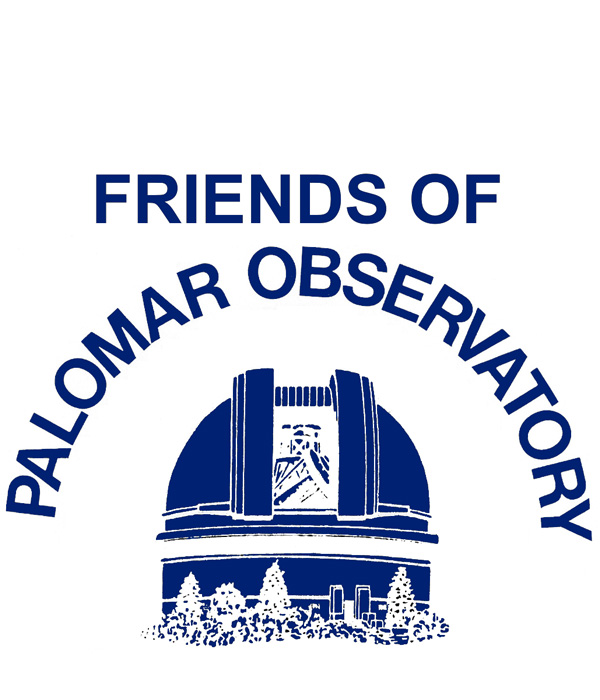
Questions? We've answered many common visiting, media, and academic questions in our public FAQ page.
Please share your feedback on this page at the
COO Feedback portal.
Big Eye 12-3
Last updated: 14 September 2017 SBF/ACM
